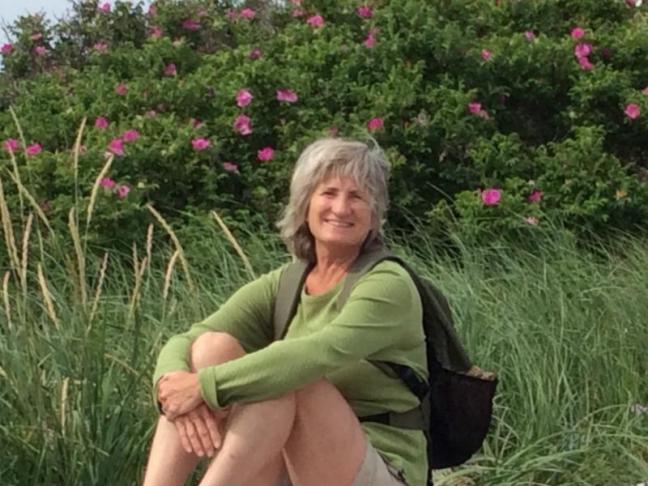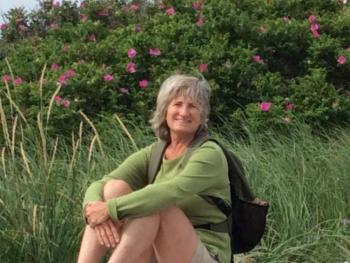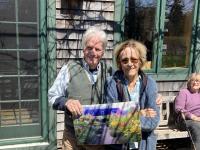Dealing with balance instability and falling
As we age, we begin to notice that our balance isn’t what it used to be. We may feel unstable when we walk. Our balance feels off-kilter. We start tripping and when we look back, there wasn’t anything to trip over. We begin scuffing our feet and take smaller steps to keep our balance. The fear of falling arises and settles in our mind.
Balance instability is one of the major reasons we fall. This can lead to the outcome of a broken hip, leg, wrist, rib or back. Complications from a fall increase physical and mental disability, along with increased mortality.
Physical and psychological setbacks arise from experiencing balance instability. With aging, we may become concerned that we cannot keep up with our friends because of feeling insecure with our balance. We may stop participating socially with others. Emotionally, this may prevent us from leaving our house due to the fear of falling while outdoors, thus leading to loneliness and isolation. Physically, our body will become deconditioned, amplifying osteoporosis, joint and muscle weakness and ending with a fall.
Balance disorders are multidimensional. As we advance in years, we are prone to disorders such as diabetes, inner ear disorders, muscular weakness, strokes, cardiovascular disease and neurogenic disorders. These conditions, along with a sedentary lifestyle can contribute to balance instability.
In my work, I have found that many of us are disconnected from our physical body. We are mentally occupied, thinking about what we need to do and where we need to go that we forget to engage our body.
In other words, we are not aware of our body positions such as how we are standing, sitting and walking. For example, we may be leaning to one side, unconsciously guarding our pain or discomfort and not aware of our posture. We slouch, roll our shoulders forward, lead with our chin, stand on one hip or favor one knee all creating muscle weakness and imbalances. We are not using our muscles to hold our body upright in proper alignment.
One reason for falling is this disconnection of mind-body. When a person is getting up from a chair or bed they are focused on where they want to go. They stand, turn their torso towards the direction they plan to move towards and neglect to reposition their feet in that same direction. When the first step is taken, they trip over their own foot and fall.
This is where proprioception is important. Our proprioception system will help us maintain the body-mind connection. The proprioception system is the unconscious and conscious awareness of movement and spatial orientation to where our bodies are in relationship to our environment. For example, when we start walking backward, we do not have to look where we are placing our foot. We receive information about our body’s position from the muscle spindles within our muscles and tendons. The brain integrates this information by sensing movement, enabling us to know where our limbs are in space, navigate our movement without having to look down at our feet. It is necessary to have this self-perception in everyday movements and activities. Coordination is essential to avoiding accidents and injury during daily and recreational activities.
Another reason for falling is due to scatter rugs. They are a risk hazard. We either trip on them or the rug slides from underneath us as we walk on them. Our parents and elders love their rugs. Try taking them away and be ready for a battle. Tripping as we walk may be simply due to not lifting our legs high enough to clear the floor.
Add these two common scenarios to the structural and medical reasons for balance instability and the risk of falling and breaking a hip is increased.
Let’s look at another common symptom of balance instability, vertigo. This is a condition that stems from our vestibular system.
The vestibular system is located in your head and includes areas of the inner ear and brain that receive sensory information. This area assists in the stabilization of our balance and eye movements. When changes occur in this region, the most common feeling is vertigo. The symptoms include a whirling sensation, lightheadedness and balance unsteadiness. Vertigo affects a person’s lifestyle, how they work, how they play and how they socialize. When experiencing vertigo, an evaluation by your primary care physician is recommended. Depending upon medical findings, symptoms and diagnostic testing, a referral for vestibular rehabilitation may be initiated.
Vestibular rehabilitation adds quality of life to those afflicted with balance instability. This area of medical expertise encompasses diagnosis, treatment, recovery and follow-up care. Incorporating specific exercises to one’s daily routine, such as range of motion of the head and neck, strengthening core and lower extremity muscles and challenging the body’s balance system work toward the goals of prevention of falls, balance stability and keeping the individual independent.
In the Midcoast, Nancy Coyne MSPT CVT is a vestibular therapist and holds an Impact Concussion Certification. She is located at Penobscot Bay Medical Center PT department. With vestibular rehabilitation, other professionals are part of the rehabilitation services including PT (physical therapy), OT (occupational therapy) and Audiology. Medical assessments are performed to develop an individualized plan of care containing vestibular exercises that will benefit each patient.
Take charge of your life by seeking medical attention and rehabilitation to keep you independent and decrease your risk of falling.
Life is meant to be lived. Don’t let fear hold you back from living.
Roe Chiacchio is a cardiac and pulmonary rehabilitation RN, CPT personal trainer and CDP certified dementia practitioner. She integrates her background into a specialized style of training for each of her clients and shares her perspective and knowledge in her articles published at PenBay Pilot. Her business, ONWARD, Cardiovascular Heath, Wellness and Dementia Management is located in Camden, Maine. Her education is based in behavioral science, psychology, neuroscience and gerontology studies. Her interest is working to enhance physical performance and mental health of individuals through her training sessions and articles. Her hobbies are photography and international travel.
For more information, contact Roe at 207 249-8166, or roechiacchio@gmail.com
Event Date
Address
United States
























